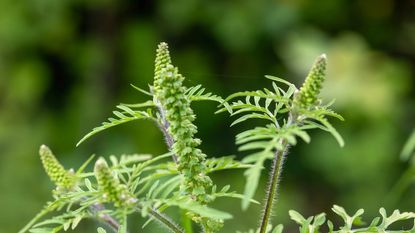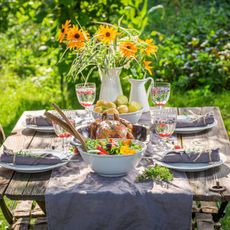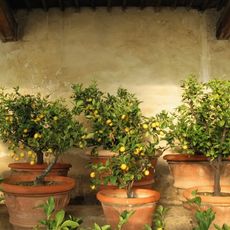Top 5 Allergy Triggering Plants


It is a bright, sunny spring morning. After being cooped up all winter, you rush out to the garden to see what might be poking up. Your mind is racing with all the chores you want to tackle. Then it happens, as soon as you walk out the door - itchy eyes, a tickle in your nose and you start to sneeze. Your throat becomes tight and your breathing becomes raspy and wheezy. Spring fever quickly becomes hay fever, and the day in the garden is over before it even began. This is an all too familiar scenario for the millions of people who suffer from seasonal allergies. However, understanding what triggers these allergies can help you to avoid and control them. Unless you spend allergy season in a plastic bubble, pollen allergies are hard to avoid. Pollen is carried by pollinators or the wind, from plant to plant to fertilize plant's female reproductive organs. Without these natural transfers of pollen, plants could not be fertilized to produce new plants. While many people, unfortunately, end up hating all plants because of pollen allergies, without them there would be no food. Instead of hating plants for their natural propagation habits, we can learn to avoid the plants that trigger our allergies. Plants reproduce and release pollen at different times of the year, depending on the species. Those that are pollinated by wind produce the most pollen. At dawn, most flower petals open up, exposing their pollen producing anthers to the air. As these anthers dry out in the morning sun, pollen is loosened up and released. This is why many allergy sufferers report worse symptoms in the morning and early afternoon. These are the peak times for air borne pollen. Certain plants produce an abundance of allergy causing pollen. Below are the top 5 allergy triggering plants: Ragweed (Ambrosia artemisiifolia) - produces pollen from summer through autumn Russian Thistle (Salsola kali) - produces pollen from spring through fall Juniper (Juniperus spp.) - produces pollen in spring Oak (Quercus spp.) - produces pollen in spring through early summer Elm (Ulmus spp.) - produces pollen in spring
Gardening tips, videos, info and more delivered right to your inbox!
Sign up for the Gardening Know How newsletter today and receive a free download of our most popular eBook "How to Grow Delicious Tomatoes."
-
 How To Grow Garden To Table: A Guide For Home Cooks
How To Grow Garden To Table: A Guide For Home CooksWhat could be better than a meal that comes directly from garden to table? Show off your gardening and culinary skills with the very freshest food.
By Bonnie L. Grant
-
 Want a Backyard Mini Orchard? Create Your Own Container Orchard
Want a Backyard Mini Orchard? Create Your Own Container OrchardEasier to care for in small spaces, a backyard mini-orchard makes sense for busy gardeners and juicy fruit is the reward.
By Teo Spengler